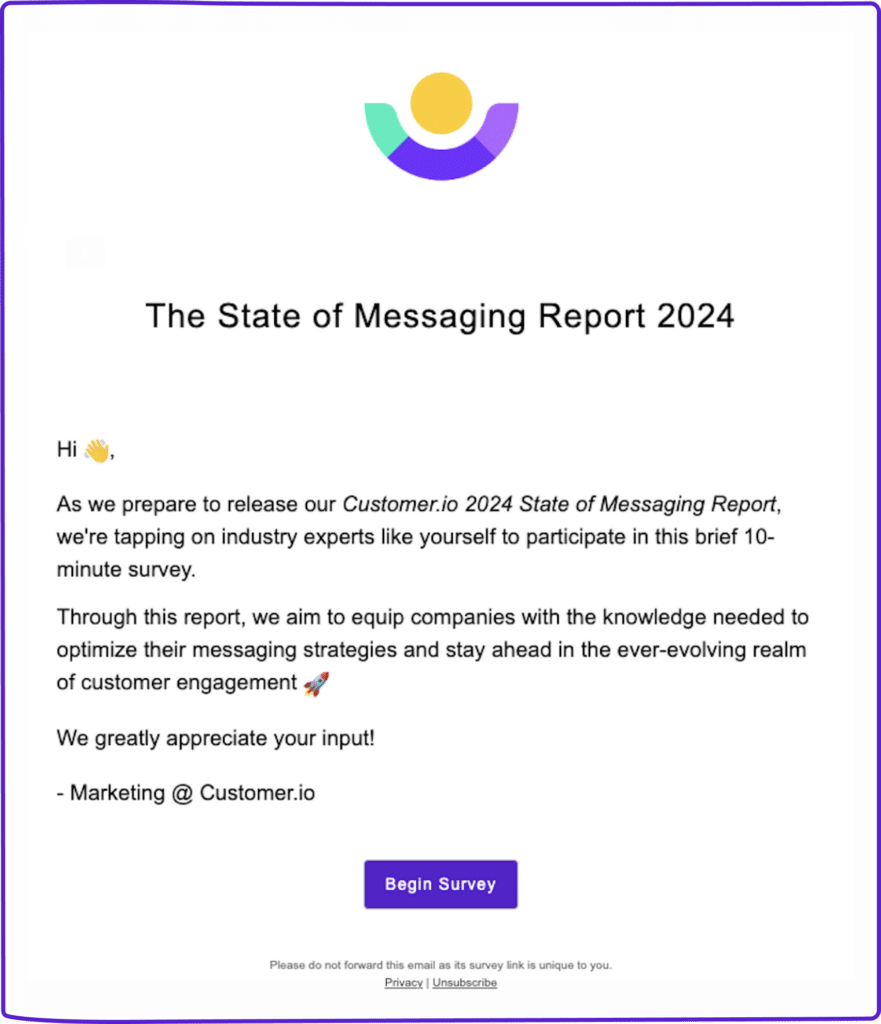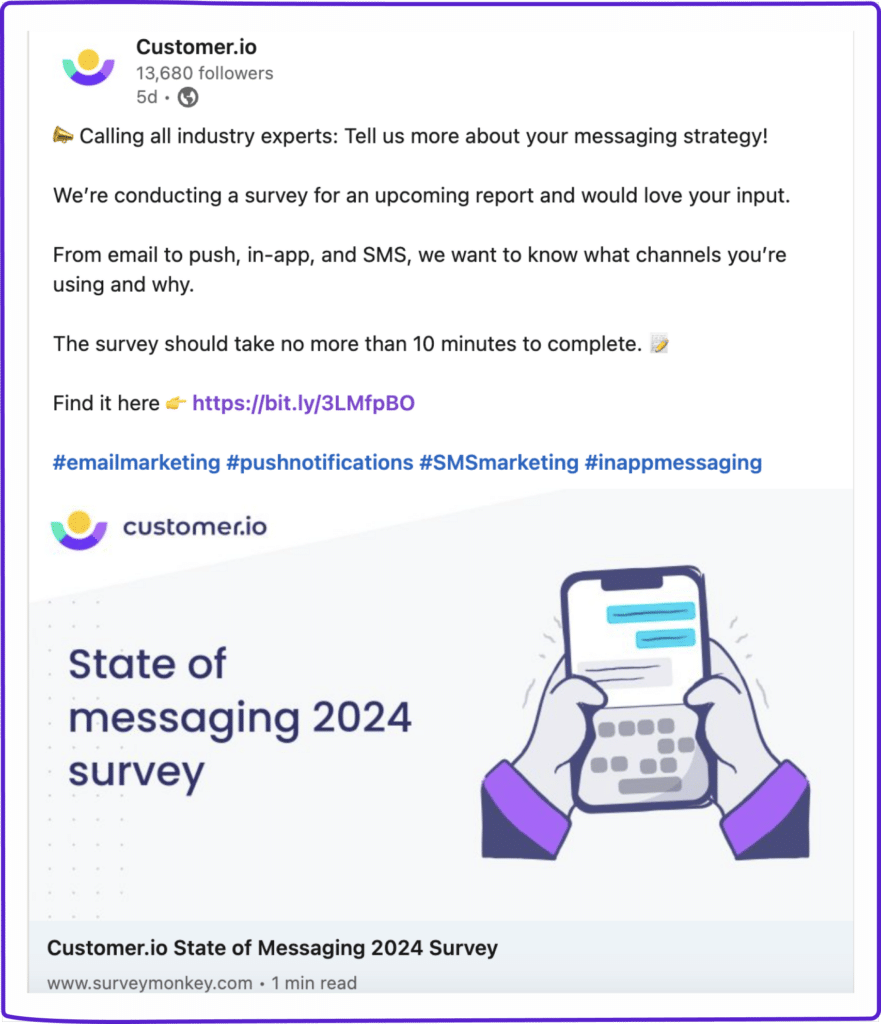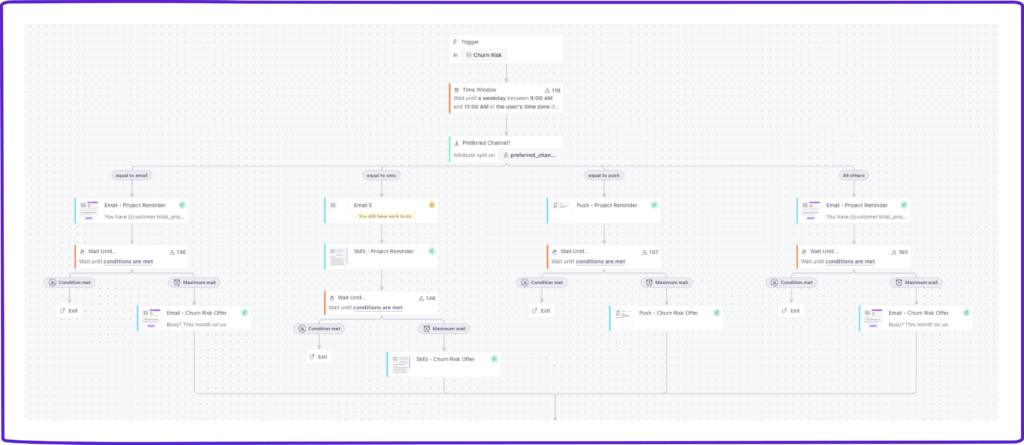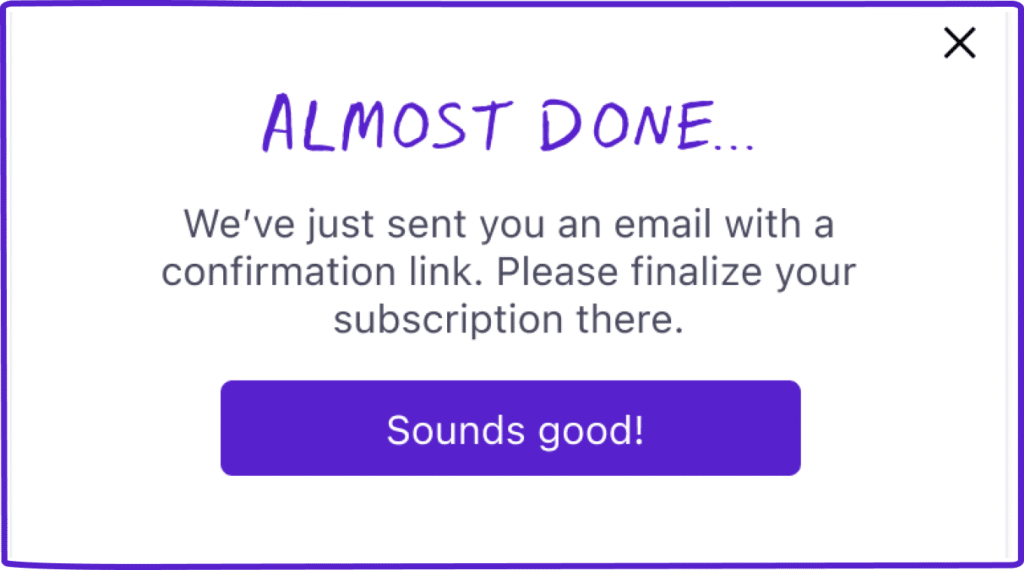
The secret to successful omnichannel marketing? Personalization
If you want to connect with your customers, you’ll need to reach them where they are. The trouble is that people are all over the place—receiving messages in their inboxes, texts, mobile apps, and even physical mail. That’s why brands need to take advantage of every channel to communicate, tailoring messages based on each individual’s unique characteristics and stage in the customer lifecycle. A personalized omnichannel marketing approach is your secret to driving engagement.
Before you lock and load your omnichannel marketing strategy, you’ll want to put some best practices in place to ensure you hit your performance targets. The best resource at your disposal? Personalization. By tapping into your customer data, your messages can deliver the kind of customized experiences that create meaningful, long-lasting relationships.
Here’s what we’ll cover:
- What is omnichannel marketing?
- 6 omnichannel marketing best practices
- Omnichannel personalization
- Customer preferences
- Measuring success
What is omnichannel marketing?
Omnichannel marketing delivers a unified customer experience across every touchpoint: email, SMS, push, in-app, and more. An omnichannel strategy aims to put the customer first across every channel, creating a consistent experience no matter where they interact with your brand.
6 omnichannel marketing best practices
Omnichannel marketing has become a cornerstone for businesses wanting to deliver a seamless and cohesive customer experience. These six key best practices can elevate your omnichannel strategy in this dynamic landscape.
1. Create cross-channel brand consistency
Remember, omnichannel marketing hinges on a holistic customer experience, so your customers need to encounter a similar look and feel across every message—from your display ads to your direct mail campaigns. Use a consistent brand voice and tone (what you say and how you say it), and apply a strong design system for a unified look with colors, style, images, and more (check out Dan Mall’s tips for developing an effective design system).
Here’s an omnichannel campaign we recently sent at Customer.io that included email and social media messaging:


2. Map your customer journey
Take a step back and think through your customer’s entire lifecycle. What are the key moments that can push them to deeper engagement? This is a moment to tap into the wisdom of multiple teams here: marketing, customer success, sales, and product folks will bring different perspectives (a whiteboarding tool like Miro can streamline this collaboration).
With your customer journey in hand, map out which channels make sense for each milestone. You might combine in-app messages, push notifications, and email to move people through your omnichannel campaign for mobile onboarding. For win-back attempts, your omnichannel strategy might combine email and direct mail to reach people in both their digital and physical mailboxes. Take an empathetic approach that takes into account where and when customers may be more irritated by messages. No one likes receiving too many pushes to check out when you’re not ready to make a decision yet.
3. Leverage real-time data
Omnichannel personalization relies on customer data with up-to-the-second accuracy. Take SMS messages as an example: they’re ideal for responding in real time to customer behaviors to induce a sense of urgency. Conversely, people check email less frequently, so the feeling of immediacy is easily lost. Customer data is your solution for personalizing omnichannel campaigns—so make sure you activate it!
This is where collaboration with your marketing ops team or your back-end engineers will be key. It’s not easy to make sure that the right data is always flowing into your marketing automation platform, but clear and frequent communication with whoever’s responsible for your data integration is important.
Unify data with a CDP
Customer data platforms (CDPs) ingest data from every touchpoint—messages you send, actions on your website, behaviors within your platform or app, and so on. Then, the CDP unifies that data and sends it to all the tools in your martech stack. And because this all happens within milliseconds, your marketing automation platform can personalize omnichannel campaigns with reliable precision.
Tap into zero-party and first-party data
Your customers voluntarily tell you a lot about themselves, from the zero-party data they provide, like their name and email address, to the first-party data you collect about their interactions with your brand. Use that data to build stronger relationships with omnichannel personalization.
Provide value with offers and content relevant to their interests. Tell people how you’re using their data (including how you protect it!). You can even deepen relationships by showing people their customer data; Spotify’s annual Wrapped campaign is a powerful example of this approach.
4. Segment your audience
An omnichannel marketing strategy that sends the same messages in the same channels to everyone is in danger of feeling generic. An effective way to personalize messages is to segment your audience based on customer data and build omnichannel campaigns tailored to each cohort. You might segment based on things such as:
- Lifecycle stage: new customers (onboarding), people with growing engagement, or long-time power users.
- Churn risk: people whose activity has decreased, customers with a large volume of support requests, or those who haven’t logged into your product for a while (red flag!).
- Attributes: demographics (location, age, and income bracket), interests (indicated directly or through the kind of content they engage with), or company details (industry, size, and growth stage).
5. Manage omnichannel campaigns effectively
The more channels you use, the more complexity you introduce in your workflows, and the more difficult it can be to manage.. To avoid chaos, we recommended these omnichannel marketing best practices for your internal processes as well as your messaging strategy:
- Manage each campaign: Keep all the messages in an omnichannel campaign within a single view in your marketing automation tool.
- Manage each channel: Leverage a unified automation tool that lets you directly manage every channel as well as entire omnichannel campaigns.
- Manage message volume: When you’re hitting customers in multiple channels, you run the risk of bombarding them, resulting in unhappy customers. Set message limits to avoid overdoing it and communicate with the rest of your team so everyone is aware of the different customer touchpoints throughout the lifecycle.
Here’s a view of an example omnichannel campaign from within Customer.io:

6. Test, tweak, and optimize
A/B testing is a crucial tool in a marketer’s toolbox for optimizing campaigns. It’s especially important for refining your omnichannel marketing strategy so you can compare performance not just of content but also of specific channels. A few things you might want to try:
- Content testing: The most common A/B tests compare different subject lines, calls-to-action, imagery, and other elements. Try them for each channel.
- Channels: See if a message gets better results with a push notification versus an in-app message or compare email and SMS head-to-head to see how your audience responds.
- Holdout testing: Sometimes, the most effective approach is sending nothing at all! Use holdout testing to examine the impact of sending a message versus keeping mum at a particular stage in the customer journey.
Customer.io Journeys pro-tip: You can test entire customer journeys with random cohort testing. This comes in handy for omnichannel marketing campaigns where you want to find out which channels are working best for specific campaign messages.
Power up with omnichannel personalization
For truly customer-centric omnichannel campaigns, you need to get personal. Tailoring your messages to each individual is a proven method for increasing engagement. In fact, 80% of people are more likely to buy from brands that offer personalized experiences (source), and 76% say they expect messages to be personalized (source).
The good news is that you already have a treasure trove of intel for omnichannel personalization: customer data. Tapping into what you know about who your customers are (their attributes) and what they do (their behaviors) ensures every message hits home.
Omnichannel personalization strategies
There are myriad ways in which you can personalize your messages with customer data. Here are just a few strategies you might try:
- Celebrate milestones: Reward customers for taking key actions with celebration messages. For example, a budgeting app might pepper their onboarding campaign with a push notification congratulating someone for connecting their bank account, then send an in-app message giving kudos for hitting their first savings goal.
- Personalize images as well as text: Go beyond “Hi {first_name}” to deepen personalization. Images have power—even more so when they reflect an individual’s experience. Say you’re a travel booking platform: your promotional email could show a picture of someone’s most recent vacation destination to inspire them to plan another getaway. That’s something they’ll connect to right away.
- Customize your timing: Respond to real-time customer behavior to catch them when they’re most likely to act. An abandoned cart campaign is a perfect opportunity for personalized omnichannel marketing. You could send an SMS message an hour after someone has put something in their cart but still needs to complete their purchase. Then, if they don’t check out within the next 24 hours, you might send an email with a snapshot of their cart and reviews of the products they selected.
These are just a handful of ideas to get you started with omnichannel personalization. Explore all the details of message personalization in our complete guide.
Keep customer preferences top of mind
Omnichannel marketing relies on using multiple channels, but your messages will fall flat if you’re trying to reach people in ways they don’t like. You need to make sure they genuinely want to hear from you across the channels you’re trying to reach them.
Implement double opt-in for email and SMS messages
Someone signs up on your website to receive marketing messages—good, right? Well, hang on. That might not indicate a real desire to engage. Maybe they signed up just to get an offer or freebie (you did tell them they’d get 10% off their order in exchange for their email). Or, perhaps they entered their information without really understanding what to expect.
If they’re not genuinely interested, chances are they’ll quickly unsubscribe or even mark emails as spam, closing off the relationship (and potentially damaging your domain reputation – not good). With a double opt-in process, customers receive a message confirming their subscription. If they take the extra step to confirm, you can count on their enthusiastic consent.

Recommended reading: When is it okay to send an email without an unsubscribe link? [Blog post]
Consider in-app messages carefully
Getting consent to send marketing messages is crucial to good customer relationships (plus, it’s the law!). But there’s one channel where they can’t opt out: in-app. Before you put an in-app message into your omnichannel campaign, consider that your customer didn’t sign up to receive it—and the only way they can get out of future messages is to delete your app entirely. So, follow best practices for in-app messaging. This ensures every message delivers real value and doesn’t unnecessarily overload your omnichannel campaigns with this channel. Otherwise, it won’t be long before you start hearing from annoyed customers.
Put the customer in control with a subscription center
If someone’s getting too many SMS messages from you, is their only option to text STOP? What if they’re overwhelmed by email—is a global unsubscribe link their only way out? If the answer is yes, you’ve given customers an all-or-nothing proposition: they can get every message you dream up or shut the door completely. Instead, put them in the driver’s seat with a subscription center so people can choose how often they get messages, the channels they prefer, and the topics they’re interested in. Subscription centers reduce unsubscribe rates (unsubscribes have a business cost!) and provide a more personalized experience—a win-win for customers and your omnichannel marketing strategy.
Use customers’ preferred messaging channels
Just because someone hasn’t opted out of a channel doesn’t mean they’ll engage there. Even within an omnichannel strategy that leverages every possible channel, you need to customize the customer journey to align with their needs. If a customer rarely checks their email, for instance, you’re not likely to get traction there. And if someone finds frequent SMS messages or push notifications annoying, they might opt out entirely.
Analyze your data to automatically detect customers’ preferred messaging channels, then create segments within your omnichannel campaigns to be sure you’re reaching them where it matters most.
Measuring the success of your omnichannel marketing strategy
You already know that tracking metrics is essential in gauging the success of your marketing efforts. But are you measuring what matters?
Message-specific metrics like opens and clicks give you a limited view. Base your goals on customer actions instead to see the big picture.
- Measure key customer actions, such as completing onboarding steps or hitting certain lifecycle milestones.
- Set conversion goals for your omnichannel campaigns.
- Define specific goals for each message and campaign.
- Assess message micro-conversions (secondary key metrics) within the context of the larger campaign’s performance.
- Define success based on outcomes: the customer actions that result in conversion, retention, and increased lifetime value.
Customer.io Journeys pro-tip: Consider the costs of omnichannel marketing and choose a platform that fits your needs. At Customer.io, every plan tier offers unlimited push, in-app, and SMS messaging. You can build omnichannel campaigns that leverage every channel fully without worrying about your budget. (Caveat: you do have to pay a provider to deliver SMS messages; we like Twilio for their pay-as-you-go pricing model and volume discounts.)
Omnichannel marketing + personalization = long-term engagement
If you want to shift people from casual customers to committed champions, personalized omnichannel marketing is a winning strategy. This approach elevates you from just another brand to a recognizable, valuable presence in your customers’ lives. You have the opportunity to create a seamless brand experience that makes people feel seen and appreciated—with customer data and omnichannel marketing best practices in your arsenal, you’re ready to get started!
Want to see a successful omnichannel campaign in action? Dive into this on-demand workshop.
Eager to start building your own omnichannel marketing campaign? Start your free 14-day trial of Customer.io journeys.
